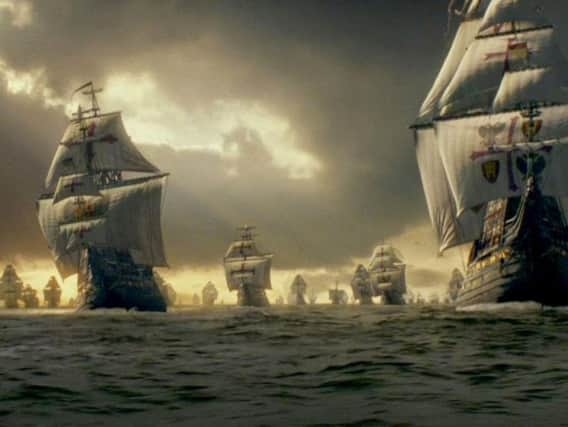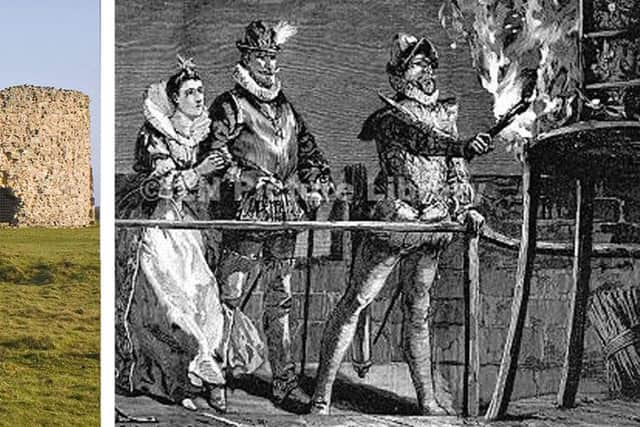Sussex beacons warned of Spanish Armada's arrival


Actually beacons are much older than the time of Queen Elizabeth I though ironically we have this knowledge thanks to an historian who lived in the Tudor period. In 1570 William Lambarde completed a book titled “Perambulations of Kent” that’s considered to be the first-ever history of an English county.
Of beacons he had this to say: “Touching the antiquitie and name, Becnian, which is to call by signs (or to beckon, as we yet speake) they are named beacons and I find, before the time of King Edward III, they were made of great stacks of wood … but about the eleventh year of his reign (around 1338), it was ordained, that in our shyre they should be high standards with their pitchpots.”
Advertisement
Hide AdAdvertisement
Hide AdWe have another account concerning beacons written by a contemporary of Lambarde, Laurence Nowell. It dates from 1556 and doubtless was influenced by conversations between the pair. It begins: “Ye mayken of Fyre Beacens.” Because in those days spelling and grammar was very much at the whim of the writer let me summarise his words: Edward III ordered that in all shires the beacons were to be erected to be four times the height of a man and have steps allowing access to the top and to a metal pitchpot set out on a spar.


So we can see that from quite early on, a warning beacon was more than a large bonfire. Instead combustion was provided by highly flammable pitch-soaked rope. The advantages of the latter were that the rope would be easy to light, even in wet weather and would burn for a considerable time. In addition the pitch would give off black smoke that would be visible in daylight – a big advantage given that enemy ships can be spotted a long way out to sea in the daytime.
Lambarde’s book includes a map detailing the beacons of Kent and a network of sight lines that led to the capital via a final beacon on Shooter’s Hill in what is now South East London. The map also shows Sussex beacons at Crowborough (spelt “Crowbarrow”), Brightling and Fairlight (“Fayrelegh”) near Hastings.
Lambarde’s map invited a charge of treason but he evaded an appointment with the executioner by successfully arguing that the chart would assist the watch keepers in carrying out their duties.
Advertisement
Hide AdAdvertisement
Hide AdThat pitch-soaked rope was the secret of longer-burning beacons eluded later historians. In 1890 Boys Firmin of Crowborough published a history of the town. Of Crowborough Beacon he wrote: “In a field close by the Warren may be seen a stone slab let into the turf, which indicates where fires were lighted to signal the approach of danger. Huge piles of wood were kept close by ready to be lighted at an instant upon the alarm signal from some other height. The last occasion upon which all the beacons were lighted was upon the appearance of the Spanish Armada in 1588.”


Mr. Firmin may be wrong about the piles of wood but he is right about the Armada. Prior to the fleet’s arrival there were a number of false alarms. On one occasion Sussex-born Thomas Sackville, 1st Earl of Dorset, spent a night out on the Downs with 1,600 men after a number of ships were spotted off Brighthelmstone (Brighton). Next morning they were found to be friendly Dutch vessels sheltering from bad weather.
On 19th July 1588 the Spanish fleet was spotted off the Lizard in Cornwall and the first fire was lit. It’s been estimated that from the time the first Sussex beacon was lit it would take just 30 minutes for London to receive the alert.
Perhaps it was just as well that the Spanish army never landed as England’s own land forces were largely poorly trained and poorly armed: think the Tudor equivalent of Dad’s Army. A thousand veterans from an English force in the Netherlands had been hastily recalled but it turned out they had not been paid for many months and the majority simply deserted and went home.
Advertisement
Hide AdAdvertisement
Hide AdThat the invasion didn’t happen was down to effective harassment by Sir Francis Drake’s flotilla of ships that were smaller than the Spanish galleons but more manoeuvrable. He also deployed fire ships that caused panic amidst the Spanish fleet. Even so, Drake’s most decisive ally was the weather with prevailing winds and storms preventing the Armada from closing on the English coast.
Present day Camber Sands figured in the Spanish plans as a place to land invading troops and in anticipation of this larger guns were installed in Camber Castle. Ships from nearby Rye fought alongside Drake. Among the port’s six vessels was the “Towne Shippe of Warre of Rye” called “William”. Under the command of Lord Henry Seymour, this Rye fleet participated in the fire-ship attack off Calais.
Though just 67 ships of the 140-strong Armada returned to Spain, it didn’t deter the Spanish from assembling a second invasion fleet even bigger than the first. Fortunately lightning did indeed strike twice for in 1597 the ships were caught in a massive storm off the coast of Galicia and incurred such heavy losses that the endeavour was abandoned.